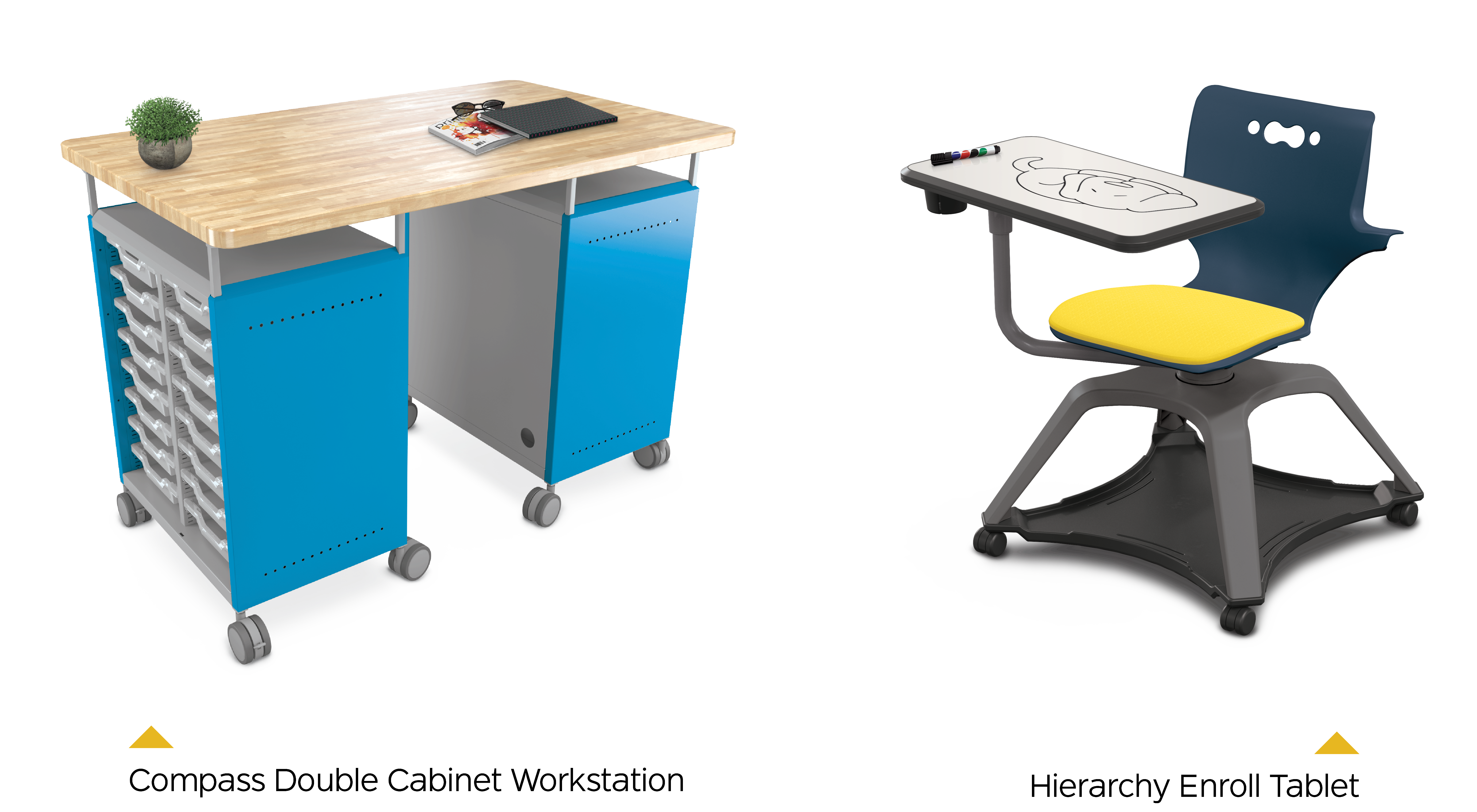There's Still Time to Use ESSER Funds in 2024
Posted by MooreCo Inc on Apr 5, 2023 1:16:27 PM
MooreCo Inc. was the first manufacturer to address school districts' uncertainty on navigating the emergency relief funds by creating the first comprehensive guide on ESSER Funds (See our 2024 updated guide). Below we provide you with a refresher on all things ESSER and how furniture purchases can be justified under the ESSER program.
"Is there still time to use ESSER Funds?"
Yes, there is!
What does ESSER stand for?
ESSER stands for Elementary and Secondary School Emergency Relief and is a program created by the U.S. federal government in response to the COVID-19 pandemic. The program provides funding to states and school districts to help address the impact of the pandemic on schools and students. The funding can be used for a variety of purposes, such as purchasing personal protective equipment (PPE), improving ventilation systems, and providing mental health support to students.
What is the ESSER Formula for fund allocation?
The formula takes into account each state's relative share of Title I-A funding, which is a federal program that provides funding to schools with high numbers or percentages of low-income students.
Under the formula, each state is allocated a percentage of the total ESSER funding based on its share of Title I-A funding. For example, if a state received 3% of the total Title I-A funding allocated to all states, it would receive 3% of the total ESSER funding allocated to all states.
Once funds are allocated to states, they are distributed to school districts based on a similar formula that takes into account each district's relative share of Title I-A funding. This ensures that districts with high concentrations of low-income students receive a larger share of the funding.

How can the purchase of furniture be justified under ESSER?
Under the ESSER, purchasing furniture may be considered an allowable expense if it is directly related to addressing the impact of the COVID-19 pandemic on schools and students. Here are some examples of situations where purchasing furniture could be justified:
-
Providing additional classroom furniture to support social distancing measures: Purchasing desks or tables to ensure that students can be seated at a safe distance from each other.
-
Upgrading furniture to support remote learning: If a school is implementing a hybrid or remote learning model, it may need to purchase furniture, such as chairs or tables, to ensure that students have comfortable and ergonomic workspaces at home.
-
Purchasing furniture to support mental health services: Schools may need to purchase furniture, such as comfortable chairs or bean bags, to create calm and welcoming spaces for students to receive mental health services.
- Creating outdoor learning spaces: As schools look for ways to provide learning opportunities in safer, socially distanced environments, they may consider setting up outdoor classrooms or learning spaces. Purchasing outdoor furniture such as picnic tables, benches, and shade structures could be an allowable expense under ESSER funding.
- Improving accessibility and inclusivity: Schools may need to purchase furniture or equipment to improve accessibility for students with disabilities, such as adjustable height tables or chairs with back support. This could be considered an allowable expense under ESSER funding.
- Addressing COVID-19 transmission risks in common areas: Schools may need to purchase furniture for common areas such as hallways or cafeterias to reduce the risk of COVID-19 transmission. For example, purchasing dividers or barriers to separate seating areas or installing touchless water fountains or bottle filling stations could be considered an allowable expense under ESSER funding.
- Creating flexible learning spaces: Schools may need to create flexible learning spaces that can be easily reconfigured to accommodate different teaching and learning styles or to allow for safe social distancing. Purchasing movable furniture such as tables, chairs, and bookshelves could be considered an allowable expense under ESSER funding.

ESSER Funding: What you can and can't purchase with it
Here are some examples of what can be purchased with ESSER funds:
- Personal protective equipment (PPE) and cleaning supplies
- Technology and internet connectivity: laptops, tablets, Wi-Fi hotspots, media centers, flat panel carts, and other technology to support remote learning and online instruction.
- Mental health services: counseling services, mental health screenings, and other support to students and staff who may be struggling with the impact of the pandemic.
- Professional development: training to help teachers adapt to new teaching methods or technologies.
- Facility upgrades: Schools can use ESSER funds to make improvements to ventilation systems, HVAC systems, and to classrooms, technology spaces, libraries and other facilities to help prevent the spread of COVID-19 and to improve the spaces
Although major construction or renovation projects cannot use ESSER Funds, there are circumstances where they could.
It's important to note that any use of ESSER funding to purchase furniture must be directly related to addressing the impact of the pandemic on schools and students, and must comply with all applicable federal and state laws and regulations. Additionally, all expenditures of ESSER funding must be documented and reported in accordance with federal and state requirements.
Download our Guide to ESSER Funds
Topics: Covid-19, Back-to-school, learning from home, hybrid classroom, remote, Thrive, Educators
